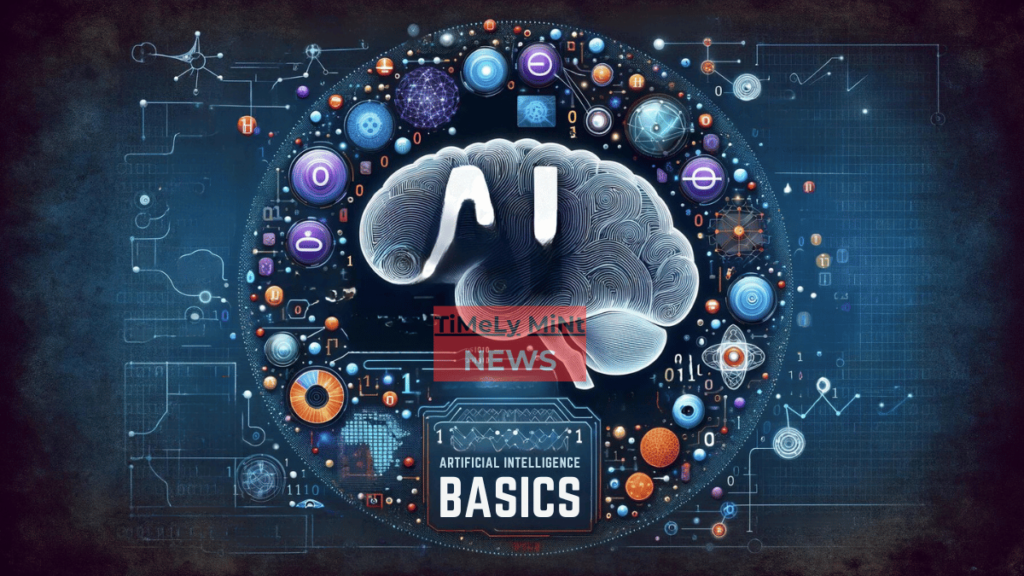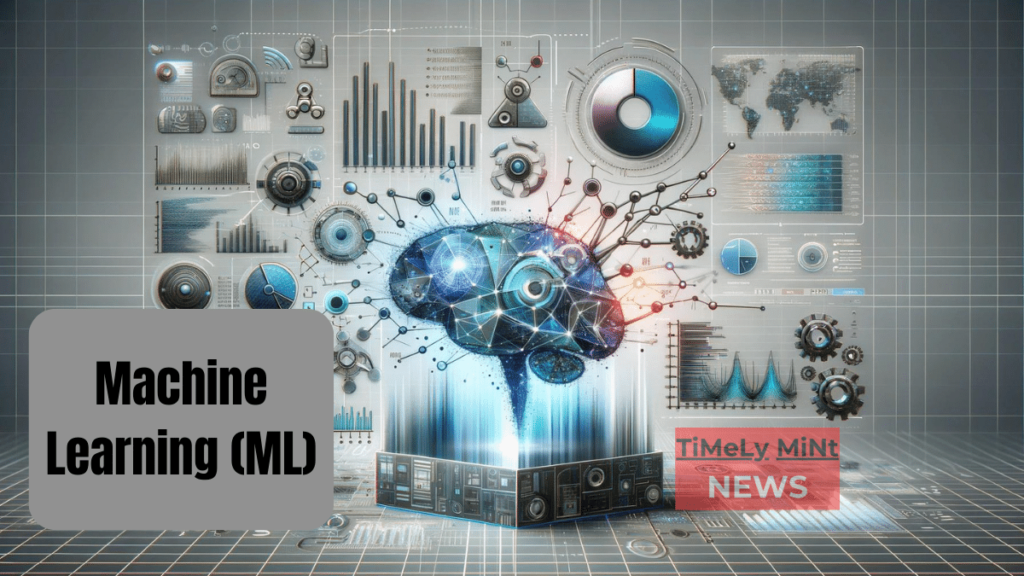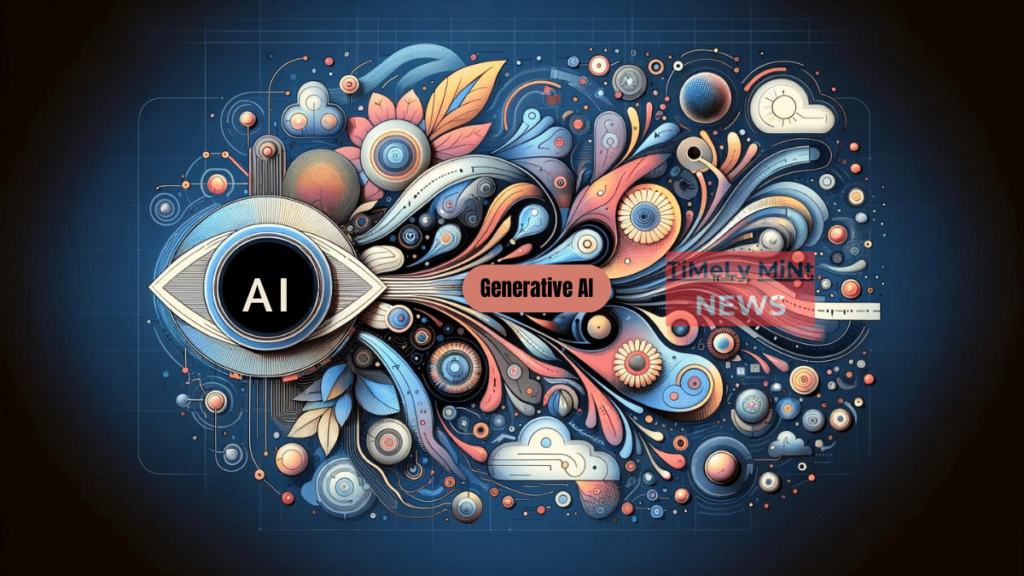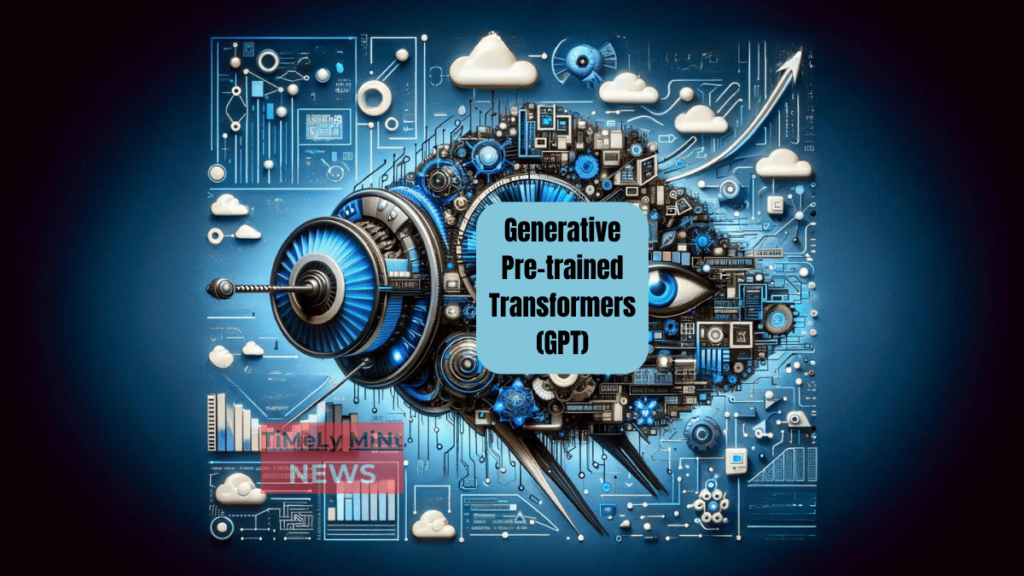Introduction
Artificial Intelligence (AI) has rapidly evolved from a science fiction concept to a transformative technology reshaping various industries and aspects of our lives. As AI continues to advance, it’s crucial to understand the different components and subfields that make up this vast and complex domain. This beginner’s guide aims to demystify AI, Machine Learning (ML), Generative AI, and Generative Pre-trained Transformers (GPT), providing a comprehensive overview of their definitions, applications, and relationships.
Understanding the Basics
Artificial Intelligence (AI)

Artificial Intelligence refers to the development of computer systems capable of performing tasks that typically require human intelligence, such as visual perception, speech recognition, decision-making, and language translation. AI systems are designed to mimic human cognitive functions and learn from data to solve complex problems.
The origins of AI can be traced back to the 1950s when pioneers like Alan Turing, John McCarthy, and Marvin Minsky laid the foundations for this field. Since then, AI has evolved rapidly, driven by advancements in computing power, data availability, and algorithms.
AI has found applications in various industries, including healthcare (medical diagnosis and drug discovery), finance (fraud detection and stock trading), transportation (autonomous vehicles and traffic management), and entertainment (recommendation systems and content generation).
Machine Learning (ML)

Machine Learning is a subset of AI that focuses on developing algorithms and statistical models that enable computer systems to learn from data and improve their performance on specific tasks without being explicitly programmed. ML algorithms can identify patterns, make predictions, and optimize decision-making processes based on the training data they are exposed to.
There are three main types of ML:
- Supervised Learning: The algorithm is trained on labeled data, where the input data is mapped to the desired output. Examples include image classification and spam detection.
- Unsupervised Learning: The algorithm is trained on unlabeled data to identify patterns and relationships within the data. Examples include clustering and dimensionality reduction.
- Reinforcement Learning: The algorithm learns through trial and error by interacting with an environment and receiving rewards or penalties for its actions. Examples include game-playing AI and robotics.
Generative AI

Generative AI is a rapidly emerging field within AI that focuses on creating new content, such as text, images, audio, and video, using machine learning models. Unlike traditional AI systems that are designed to analyze and interpret existing data, Generative AI models are trained to generate original content based on the patterns and relationships they learn from the training data.
Examples of Generative AI applications include ChatGPT, a language model developed by OpenAI that can engage in human-like conversations and generate coherent text on various topics, and DALL-E, an AI system that can create realistic images from textual descriptions.
OpenAI recently also unveiled OpenAI Sora, an advanced text-to-video AI capable of generating disturbingly realistic fake videos on 15th Feb 2024. OpenAI says it will take safety steps before any public release of Sora. This includes working with experts to test for potential harms and building tools to detect fake videos.
Generative Pre-trained Transformers (GPT)

Generative Pre-trained Transformers (GPT) are a type of language model within the field of Generative AI. GPT models are trained on vast amounts of text data from the internet, allowing them to learn and understand the patterns and relationships within natural language.
The first GPT model, introduced by OpenAI in 2018, demonstrated the ability to generate human-like text by predicting the next word in a sequence based on the context provided by the previous words. Subsequent iterations, such as GPT-2, GPT-3 and GPT 4 , have significantly improved in their language understanding and generation capabilities, making them valuable tools for various natural language processing (NLP) tasks, including content creation, language translation, and question answering.
Distinguishing Between AI, ML, GPT, and Generative AI
While AI, ML, GPT, and Generative AI are closely related, it’s essential to understand their differences and relationships:
| Concept | Definition | Relationship |
|---|---|---|
| Artificial Intelligence (AI) | The broad field of developing computer systems capable of performing tasks that typically require human intelligence. | AI is the overarching concept that encompasses ML, Generative AI, and GPT. |
| Machine Learning (ML) | A subset of AI that focuses on developing algorithms and statistical models that enable computer systems to learn from data and improve their performance on specific tasks. | ML is a core component of AI and provides the foundation for many AI applications, including Generative AI and GPT models. |
| Generative AI | A field within AI that focuses on creating new content, such as text, images, audio, and video, using machine learning models. | Generative AI is a specific application of AI and ML, leveraging techniques like GPT to generate original content. |
| Generative Pre-trained Transformers (GPT) | A type of language model within the field of Generative AI, trained on vast amounts of text data to understand and generate human-like text. | GPT models are a specific type of Generative AI model focused on natural language processing tasks, such as content creation and language translation. |
While AI and ML provide the foundation for developing intelligent systems, Generative AI and GPT models are specialized applications that leverage these technologies to generate new content and engage in human-like language interactions.
Real-World Applications
AI, ML, GPT, and Generative AI have found numerous applications across various sectors, revolutionizing the way we live, work, and interact with technology.
Healthcare
- AI and ML: Medical image analysis, disease diagnosis, drug discovery, and personalized treatment recommendations.
- Generative AI: Generating synthetic medical data for training AI models, creating realistic medical images for research and education purposes.
- GPT: Conversational AI assistants for patient support, medical transcription, and clinical documentation.
Finance
- AI and ML: Fraud detection, risk assessment, stock market prediction, and automated trading systems.
- Generative AI: Generating financial reports, investment analyses, and marketing content for financial services.
- GPT: Chatbots for customer service, financial advisory, and portfolio management.
Entertainment
- AI and ML: Recommendation systems for movies, music, and content personalization.
- Generative AI: Creating synthetic media content, such as deepfakes, music generation, and video game asset creation.
- GPT: Generating storylines, scripts, and dialogue for movies, TV shows, and video games.
Retail and E-commerce
- AI and ML: Personalized product recommendations, demand forecasting, and inventory management.
- Generative AI: Generating product descriptions, marketing copy, and visual content for e-commerce platforms.
- GPT: Conversational AI assistants for customer support and product recommendations.
Manufacturing and Logistics
- AI and ML: Predictive maintenance, quality control, and supply chain optimization.
- Generative AI: Generating technical documentation, manuals, and training materials.
- GPT: Conversational AI assistants for customer support and order management.
These are just a few examples of the numerous applications of AI, ML, GPT, and Generative AI across various industries. As these technologies continue to evolve, their impact on society and the way we live and work will become even more profound.
Future Trends and Implications
The fields of AI, ML, GPT, and Generative AI are rapidly evolving, with new breakthroughs and advancements happening regularly. Here are some potential future trends and implications:
- Multimodal AI: The integration of different AI modalities, such as vision, language, and audio, to create more comprehensive and intelligent systems capable of understanding and interacting with the world in a more human-like manner.
- Explainable AI: As AI systems become more complex and their decision-making processes more opaque, there is a growing need for explainable AI, which aims to make AI models more transparent and interpretable, ensuring accountability and trust.
- AI Democratization: The increasing accessibility of AI technologies, through open-source platforms and cloud-based services, will enable more individuals and organizations to leverage the power of AI, fostering innovation and entrepreneurship.
- AI and Sustainability: The application of AI in areas such as renewable energy, climate change mitigation, and environmental conservation, will play a crucial role in addressing global sustainability challenges.
- AI and Personalized Experiences: AI, ML, and Generative AI will enable highly personalized experiences across various domains, from healthcare and education to entertainment and consumer products, tailored to individual preferences and needs.
- AI and Creativity: Generative AI models will continue to push the boundaries of creativity, enabling new forms of artistic expression and collaboration between humans and machines.
- AI and Workforce Transformation: The widespread adoption of AI and automation will significantly impact the workforce, requiring reskilling and upskilling initiatives to prepare for the jobs of the future.
As these trends unfold, it’s essential to address the ethical considerations and potential challenges associated with the development and deployment of AI technologies, such as privacy concerns, bias mitigation, and the responsible use of AI in decision-making processes.
Challenges and Ethical Considerations
While the potential benefits of AI, ML, GPT, and Generative AI are vast, their development and implementation also present several challenges and ethical considerations that must be addressed:
- Bias and Fairness: AI systems can perpetuate and amplify existing biases present in the training data or algorithms, leading to unfair and discriminatory outcomes. Addressing bias and ensuring fairness in AI systems is a critical challenge.
- Privacy and Security: The large-scale collection and processing of data required for training AI models raise significant privacy and security concerns, particularly in sensitive domains like healthcare and finance.
- Transparency and Accountability: As AI systems become more complex and opaque, ensuring transparency and accountability in their decision-making processes is crucial for building trust and enabling responsible deployment.
- Job Displacement and Workforce Transformation: The automation of tasks and processes through AI and ML technologies may lead to job displacement and workforce disruption, requiring proactive measures for reskilling and upskilling.
- AI Arms Race and Misuse: The rapid advancement of AI technologies, particularly in areas like autonomous weapons and surveillance, raises concerns about their potential misuse and the need for effective governance and regulation.
- Environmental Impact: The training and deployment of large AI models can have a significant environmental impact due to the high energy consumption and carbon footprint associated with the required computational resources.
- AI Existential Risk: While still a hypothetical concern, some experts warn about the potential existential risk posed by advanced AI systems that surpass human intelligence and become uncontrollable or misaligned with human values.
Addressing these challenges and ethical considerations requires a collaborative effort involving policymakers, researchers, industry leaders, and the broader public. Developing ethical frameworks, establishing regulatory guidelines, and fostering responsible AI development and deployment practices are crucial for ensuring that AI technologies benefit society while mitigating potential risks and negative consequences.
In response to deepfake controversies in 2023, Meta has implemented mandatory clear watermarks and labels for AI-generated content on its platforms starting January 2024. These markings clearly indicate the synthetic origin of images, videos, and text. Additionally, Meta is collaborating with more than 200 partners in the Deepfake Detection Coalition, aiming to advance trustworthy media authentication methods. You can read our article on it here.
Conclusion
Artificial Intelligence, Machine Learning, Generative AI, and Generative Pre-trained Transformers (GPT) are rapidly evolving fields that are transforming various aspects of our lives. While each of these concepts is distinct, they are interconnected and build upon one another to create intelligent systems capable of understanding, learning, and generating new content.
As these technologies continue to advance, it’s essential to stay informed about their developments, applications, and implications. By understanding the differences and relationships between AI, ML, GPT, and Generative AI, individuals and organizations can better leverage these technologies to drive innovation, solve complex problems, and create new opportunities.
However, it’s equally important to address the challenges and ethical considerations associated with the development and deployment of AI technologies. By fostering responsible AI practices, mitigating biases, and ensuring transparency and accountability, we can harness the full potential of these technologies while safeguarding against potential risks and negative consequences.
Further Reading and Resources
For those interested in delving deeper into the world of AI, ML, GPT, and Generative AI, here are some recommended resources:
- Books:
- “Artificial Intelligence: A Modern Approach” by Stuart Russell and Peter Norvig
- “Machine Learning” by Tom M. Mitchell
- “Deep Learning” by Ian Goodfellow, Yoshua Bengio, and Aaron Courville
- “Generative Deep Learning” by David Foster
AI FAQs
What is Artificial Intelligence (AI)?
- Definition: AI refers to the development of computer systems capable of performing tasks that typically require human intelligence, such as visual perception, speech recognition, decision-making, and language translation
How does AI work?
- Explanation: AI systems are designed to mimic human cognitive functions and learn from data to solve complex problems. They use algorithms and statistical models to improve their performance on specific tasks without being explicitly programmed
What are the main components of AI?
- Components: AI encompasses subfields like Machine Learning (ML), Generative AI, and Generative Pre-trained Transformers (GPT), each with distinct applications and relationships
What is Machine Learning (ML)?
- Definition: ML is a subset of AI that focuses on developing algorithms and statistical models that enable computer systems to learn from data and improve their performance on specific tasks without being explicitly programmed
What is Generative AI?
- Definition: Generative AI is a field within AI that focuses on creating new content, such as text, images, audio, and video, using machine learning models
What are Generative Pre-trained Transformers (GPT)?
- Definition: GPT is a type of language model within Generative AI, trained on vast amounts of text data to understand and generate human-like text
What is the difference between AI, ML, GPT, and Generative AI?
- Relationship: AI is the overarching concept that encompasses ML, Generative AI, and GPT. ML is a core component of AI and provides the foundation for many AI applications, including Generative AI and GPT models
What are some real-world applications of AI?
- Applications: AI has found applications in various industries, including healthcare, finance, transportation, entertainment, and retail. Examples include medical diagnosis, stock trading, autonomous vehicles, recommendation systems, and content generation
What are the future trends and implications of AI?
- Future Trends: Multimodal AI, Explainable AI, AI Democratization, AI and Sustainability, AI and Personalized Experiences, AI and Creativity, and AI and Workforce Transformation are some potential future trends and implications
What are the challenges and ethical considerations of AI?
- Challenges: Bias and fairness, privacy and security, transparency and accountability, job displacement and workforce transformation, AI arms race and misuse, environmental impact, and AI existential risk are among the challenges and ethical considerations associated with AI
How can I learn more about AI?
- Resources: Books like “Artificial Intelligence: A Modern Approach” by Russell and Norvig, online courses like Machine Learning by Andrew Ng, and resources like Elements of AI by University of Helsinki can help you learn more about AI














